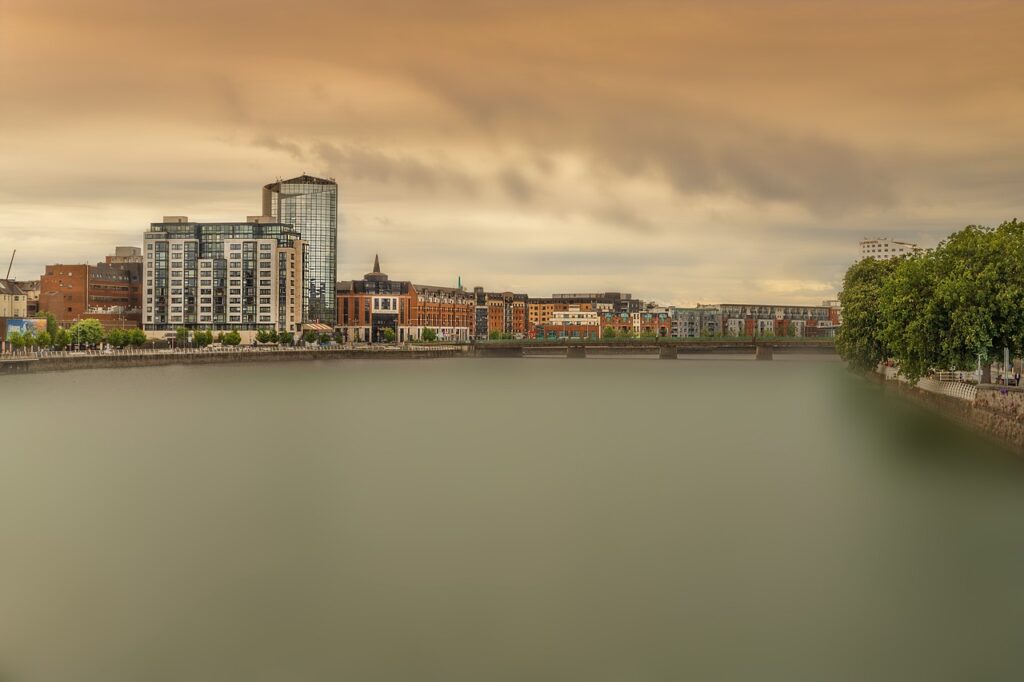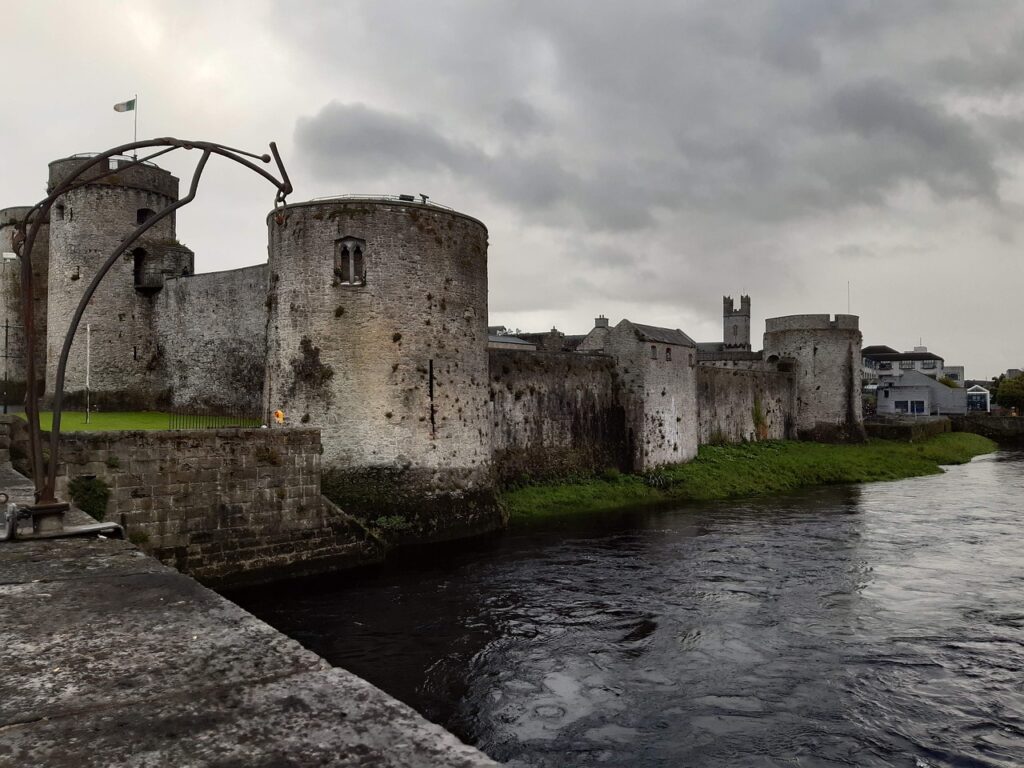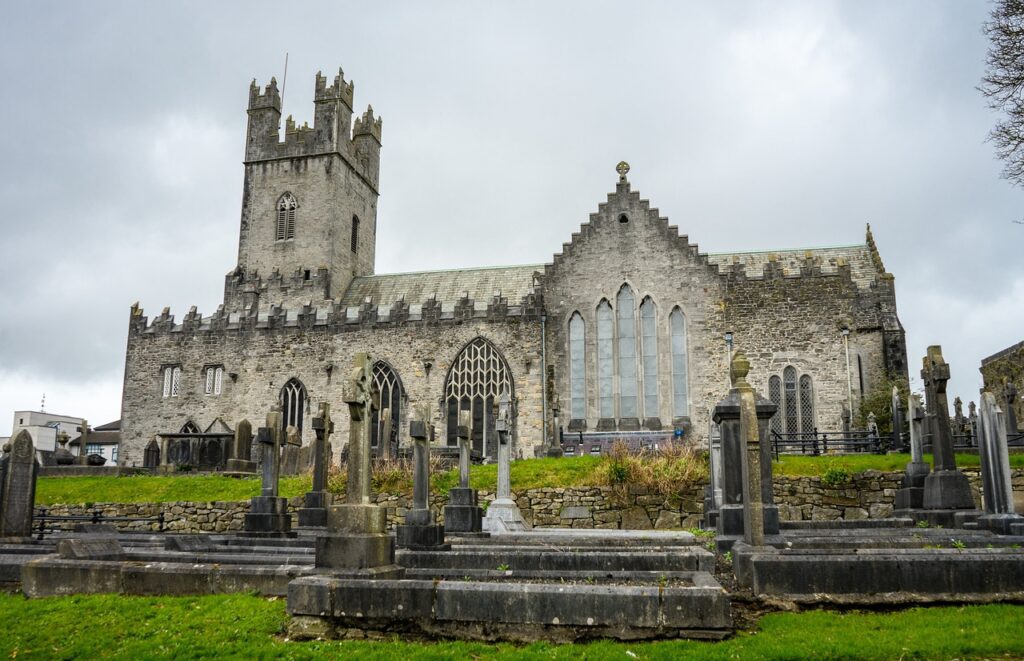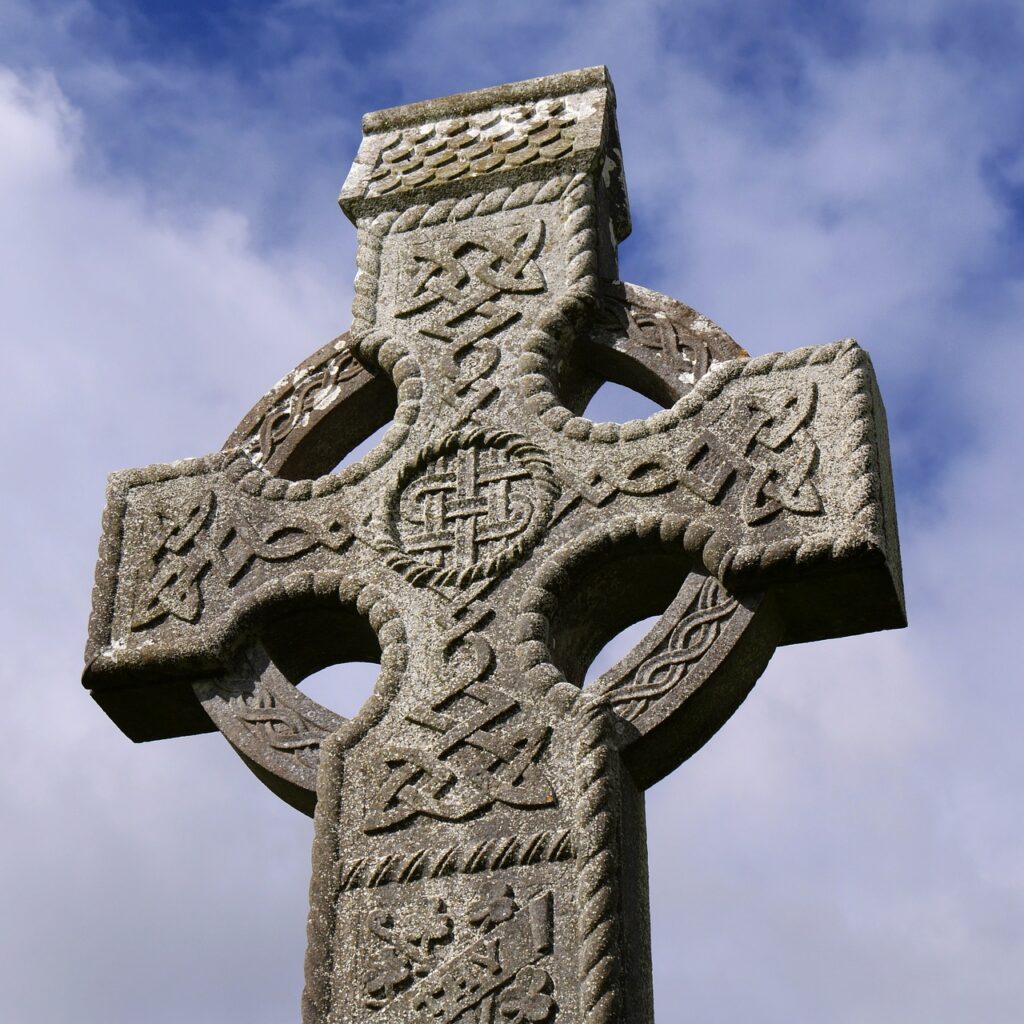
Limerick, situated along the banks of the majestic River Shannon, is a city that brims with charm and surprises. Known for its intriguing history, thriving arts scene, and captivating stories, Limerick offers a unique experience for both locals and tourists alike.
A stroll through the city’s streets will reveal tales of Limerick’s past and present. At St Munchin’s Church (free entrance), you’ll find the resting place of Limerick’s first bishop among historic headstones. The Hunt Museum (open Tuesday-Sunday, Adult: €10, Under 16: free) houses remarkable treasures concealed in secret drawers, while the Limerick Museum (open Monday-Saturday, free entrance) showcases fascinating black and white photos of the city’s local life.
King John’s Castle

King John’s Castle, one of Limerick’s most iconic attractions, stands proudly on King’s Island by the Shannon’s fast-flowing waters. Boasting a history of over 1,000 years, the castle is believed to be built atop a former Viking site. Explore the castle’s intriguing multimedia exhibitions, which unveil stories of castle life, devastating sieges, and a remarkable cast of characters.
As of writing (April 2023) these are the entrance prices to the Castle:
| Type | Price |
| Adult | €13.00 |
| Child (0-3) | €0.00 |
| Child (4-18) | €10.50 |
| Family ( 2 Adult + 2 Kids) | €39.50 |
| Family (2 Adult + 3 Kids) | €46.50 |
| Family (2 Adult + 4 Kids) | €53.00 |
| Family (2 Adult + 5 Kids) | €58.80 |
| Family (2 Adult + Up to 6 Kids) | €63.75 |
| School Groups | €7.50 |
| Senior | €9.50 |
| Student | €10.50 |
You can book via the official website.
A Stroll Through the City

Limerick’s compact and laid-back atmosphere makes it an ideal city to explore on foot. Follow the riverside walkway to St Mary’s Cathedral, Limerick’s oldest continuously used building. Marvel at the cathedral’s surprises, including the roof-high monks’ walk, damage from 17th-century cannonballs, and the “leper’s squint” — a small opening in the cathedral wall through which lepers could hear mass during medieval times.
Find yourself in Limerick’s cultural heart by visiting the restored Milk Market on Cornmarket Row. Under its vast white canopy, you’ll find a vibrant microcosm of the city, featuring pop-up restaurant events, artisan foods, antiques, music, and art. The canopy keeps out the rain, so its a safe choice for a rainy day. These are the Milk Markets regular activities:
- Friday: Lunch specials – cafe culture & live music 12.30-2pm
- Saturday: Farmer’s market
- Sunday: Family Relaxation Day: coffee, cheese, crêpes, chocolates, occasional crafts, yoga
A short walk away lies Limerick’s Georgian Quarter, where wide, elegant avenues showcase grand Georgian architecture. The Limerick City Gallery of Art hosts contemporary art exhibitions, offering a fresh perspective on the city’s artistic scene (Free entrance, Open Monday- Saturday 10am – 5pm & Sunday 12 – 5pm).
The History of Limerick
Limerick’s history stretches back thousands of years, with archaeological evidence of human settlements in the area dating back to the Stone Age. The area was home to tombs at Duntryleague (3500BC) and stone circles at Lough Gur (3000BC). By 400BC, the Celts had arrived and established various kingdoms, known as tuatha, throughout County Limerick. The ruling families of these kingdoms adopted surnames such as O’Donovan, Collins, Clerihan, Mackessy, Mac Eniry, Lambe, Kirby, and O’Linehan.

The arrival of Christianity in the 5th century brought about the establishment of monasteries in Ardpatrick, Mungret, and Killeedy, as well as numerous small churches throughout the county. Limerick city was founded by the Vikings in 922 AD on an island on the River Shannon. The Vikings were skilled traders and craftsmen, and as a result, Limerick maintained contact with other Viking towns across Europe.

The Normans captured Limerick in 1195, leaving their mark on the city with the construction of King John’s Castle, the city walls, and the local government system they founded, which still survive to this day. In 1413, King Henry V granted a charter that made Limerick an independent city-state, with its own foreign policy. Limerick even went to war with Galway in 1524, ending in a draw and a formal peace treaty.
The 16th century brought major changes as the Tudors, led by King Henry VIII, established control over Ireland. This shift paved the way for Protestantism in the country and the subsequent abolishment of Irish monasteries. By 1603, the English crown controlled all of Ireland, and Limerick lost most of its medieval independence. The 17th century saw Limerick endure four terrible sieges (1642, 1651, 1690, and 1691) as the city became a central stage in European wars. The Treaty of Limerick was signed after the fourth siege, marking the beginning of the Flight of the Wild Geese.
The 18th and 19th centuries were marked by poverty for the Catholic majority under oppressive British rule, but Limerick city experienced economic expansion during the Georgian period with the development of Newtown Pery. In rural Limerick, unrest led to the formation of secret societies such as the Whiteboys. Convicts found guilty of crimes were often transported by the British government to Australia from 1788 onwards.
From the 1830s, Limerick saw significant emigration to Australia, the United States, and Canada. The Great Famine of the 1840s had a lesser impact on Limerick than on other parts of Ireland but still resulted in more emigration than deaths. The population of County Limerick dropped by 21% during the 1840s and continued to decline until 1900 due to ongoing emigration.
Limerick played a significant role in Ireland’s fight for freedom in the early 20th century. Limerick natives Edward Daly and Con Colbert were executed for their involvement in the 1916 Easter Rising. The city also witnessed the Limerick Soviet in 1919, when the strike committee ran the city for two weeks, and was besieged during the Civil War in 1922. Since then, Limerick has become a modern city with the establishment of the University of Limerick in 1972 and the replacement of traditional industries with multinational companies.
County Limerick is home to numerous historical and ancient sites, such as Lough Gur, one of Ireland’s most important archaeological sites, which boasts the country’s largest stone circle, a dolmen, and other prehistoric remains. Created in the 1250s, County Limerick is rich with medieval monuments, including impressive castles and abbeys in historic towns like Adare, Askeaton, Kilmallock, and Newcastle West. The 19th century saw the construction of beautiful churches in Kilmallock, Rathkeale, and Ballingarry.
Adare, in particular, is renowned as one of Ireland’s most picturesque villages, with its magnificent manor and charming thatched cottages. Limerick also holds a special place in literary history, as it gave its name to the “Limerick” poem – a popular five-line humorous poem thought to have originated from the 18th-century Maigue Poets of Croom, County Limerick.
Throughout its long history, Limerick has been a Viking settlement, a medieval walled town, and a Georgian city. Today, it stands as a vibrant and modern metropolitan area with a rich and historic hinterland.
Getting There
Limerick is easily accessible from various locations within Ireland. By car, it’s a two-hour drive from Dublin and a one-hour drive from Cork.
